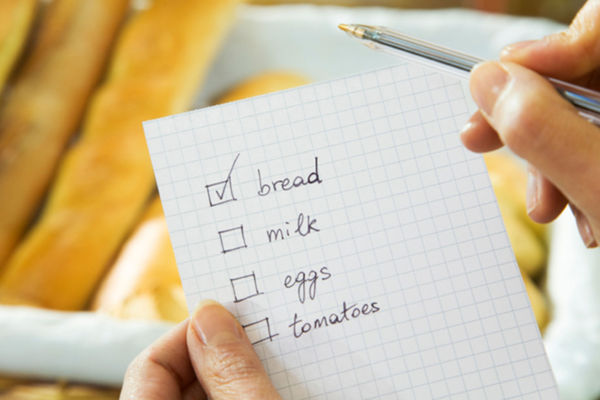Make a shopping list
Create a shopping list for a family meal: plan recipes, write required ingredients, estimate quantities, organize by store sections, and check budget.



Step-by-step guide to create a shopping list for a family meal
20 HEALTHY & QUICK KIDS SNACK IDEAS/ GLUTEN FREE, DAIRY FREE, PALEO, ALLERGY FRIENDLY/BACK TO SCHOOL
Step 1
Choose 1 to 3 recipes for the family meal such as a main dish a side and a dessert.
Step 2
Write each chosen recipe name at the top of the paper to make separate sections.
Step 3
Under each recipe write every ingredient you need in a simple list.
Step 4
Next to each ingredient write how much you need for the family size using units like cups pieces or grams.
Step 5
Go to the kitchen and check the pantry fridge and freezer and tick or cross off ingredients you already have.
Step 6
Create store sections on your paper such as Produce Dairy Meat Pantry and Frozen and move each needed ingredient into the correct section.
Step 7
Find or estimate a price for each remaining ingredient and write the price next to it.
Step 8
Add all the prices with your calculator to get the total estimated cost of the shopping.
Step 9
If the total is more than your budget choose one change like swapping an ingredient buying a cheaper brand or removing an item and update the list and total.
Step 10
Make a final shopping list with quantities prices and checkboxes and share your finished creation on DIY.org
Final steps
You're almost there! Complete all the steps, bring your creation to life, post it, and conquer the challenge!


Help!?
What can we use instead of a kitchen scale, calculator, or printer if we don't have those while making the shopping list?
Use measuring cups and spoons to record amounts, your phone's calculator and Notes app to write and total prices, and a smartphone camera or plain paper instead of a printer to prepare the sections before sharing on DIY.org.
What should we do if we can't find prices for ingredients or our total goes over budget when adding prices?
Estimate missing prices using similar items or online store averages, double-check the pantry/fridge ticks to avoid buying things you already have, then apply the instructed 'one change' (swap an ingredient, pick a cheaper brand, or remove an item) and update the total with your calculator.
How can we adapt the recipe, ingredient listing, and price steps for different ages?
For preschoolers, limit to one recipe and let them draw ingredients while an adult writes amounts and ticks pantry items; for elementary kids, have them write ingredients, sort into produce/dairy sections and add simple prices with a calculator; for older kids, challenge them to scale recipes to family size, find real store prices online, and compute the full estimated cost.
What are easy ways to extend or personalize the shopping list activity after making the final list?
Color-code your Produce/Dairy/Meat/Pantry/Frozen sections, compare unit prices to choose cheaper brands when you 'find or estimate a price', photograph receipts and the final checklist to upload to DIY.org, or repeat the process to plan a week's worth of family meals for better budgeting.
Watch videos on how to create a shopping list for a family meal
HOW TO MAKE A GROCERY LIST FAST | 5 Tips to Build Your Own in 5 Minutes
Facts about meal planning and grocery shopping
💰 Comparing prices and estimating quantities before you shop is a simple way families can trim their grocery bill.
🛒 Grouping items by store section (produce, dairy, pantry) saves time and prevents back-and-forth trips.
📊 Kids who help plan meals and check the budget practice real-world math and money skills while helping the family.
📝 Making a shopping list helps you stick to a plan — shoppers with lists typically make fewer impulse purchases.
🥘 Planning recipes ahead lets you reuse ingredients across meals, which reduces food waste and creates tasty leftovers.
How do you create a shopping list with a child for a family meal?
What materials do I need to help my child make a shopping list?
What ages is this shopping-list activity suitable for?
What are the benefits of making a shopping list with my child?


One subscription, many ways to play and learn.
Only $6.99 after trial. No credit card required


